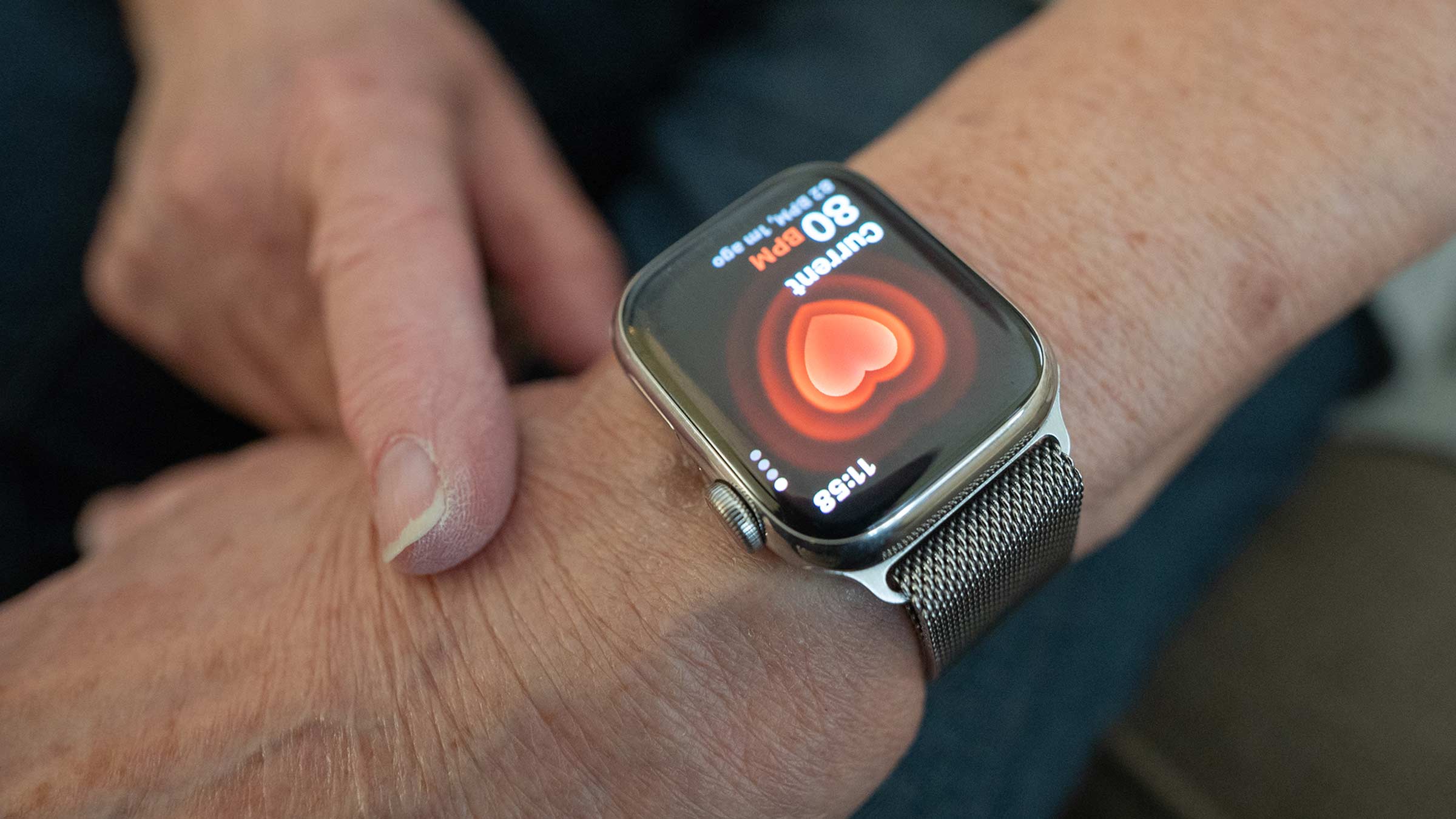Do Smartwatches Use a Lot of Data?
Do you ever wonder how much data your smartwatch uses? You might be surprised to learn that while these sleek gadgets offer incredible features, they could be silently draining your data plan.
Imagine checking your messages, tracking your fitness, and even making calls, all from your wrist. It sounds convenient, right? But what if these conveniences come at the cost of using more data than you expected? This article will uncover the truth behind the data consumption of smartwatches.
You’ll discover which features are data-hungry and learn how to manage your usage effectively. Stay with us to ensure you’re getting the most out of your smartwatch without any unexpected data surprises. Your knowledge could save you money and enhance your digital lifestyle!
Smartwatch Data Usage Basics
Smartwatches have become a part of daily life. They track fitness, receive notifications, and more. Many wonder about their data usage. Understanding the basics helps manage usage effectively. Let’s explore the types of data these devices use and their connectivity options.
Types Of Data Used
Smartwatches collect various data. Fitness data includes steps, heart rate, and sleep patterns. They also receive notifications from emails and social media. Some smartwatches have GPS. This uses more data as it tracks location. Music streaming or downloading apps can increase data use too.
Connectivity Options
Smartwatches connect in different ways. Bluetooth connects them to smartphones. This uses less data. Some have Wi-Fi connectivity. It allows direct internet access. Wi-Fi can use more data. Others have LTE or cellular options. This enables phone-free use but uses more data. Choosing the right option depends on personal needs.

Credit: www.cnn.com
Factors Affecting Data Consumption
Smartwatches have become essential gadgets for many people. They offer a variety of features that can use data. Understanding data consumption is important. It helps manage costs and battery life. Several factors influence how much data a smartwatch uses.
App Usage
Apps play a big role in data usage on smartwatches. Some apps need constant data connections. Fitness tracking apps can use a lot of data. They sync with your phone or the cloud. Streaming music on your smartwatch also uses data. Be mindful of the apps you use.
Background Processes
Background processes can affect data consumption significantly. These processes run without you noticing. They may sync emails or notifications. Some apps update data in the background. Limiting these processes can save data. Check your smartwatch settings to control them.
System Updates
System updates are necessary for optimal performance. They can, however, consume data. Updates may include new features or security patches. Download updates over Wi-Fi to save data. Check for updates regularly to keep your device secure.
Comparing Smartwatch And Smartphone Data Use
Smartwatches have become popular alongside smartphones. Many people wonder about their data usage. Comparing smartwatch and smartphone data use helps understand their differences. Both devices connect to the internet. They send and receive data. But their data requirements are not the same.
Data Transfer Rates
Smartphones often have higher data transfer rates. They stream videos and download large files. Smartwatches usually transfer smaller amounts of data. They sync notifications and track fitness stats. Smartwatches send updates to apps. This limits their data transfer needs compared to smartphones.
Bandwidth Requirements
Smartphones require more bandwidth. They support high-resolution media and complex apps. Smartwatches have simpler apps. They focus on efficient data use. Bandwidth requirements for smartwatches remain lower. They manage data effectively. This reduces their impact on data plans.
Managing Data Usage On Smartwatches
Smartwatches have evolved into indispensable companions, doing much more than just tracking your steps or reminding you of appointments. But have you ever considered how much data they use? Managing data usage on smartwatches can be tricky, especially if you’re concerned about overage charges or limited data plans. Understanding how to keep data consumption in check can help you enjoy your smartwatch without any worry.
Monitoring Data Usage
Knowing how much data your smartwatch uses is the first step in managing it effectively. Many smartwatches come with built-in settings that allow you to track data usage. Check these settings regularly to stay informed. You might be surprised at how much data is consumed by background apps or features you rarely use.
Using data tracking apps can also be helpful. These apps can provide insights into which applications are the biggest data hogs. They often give detailed reports, making it easier for you to pinpoint where adjustments are needed. How often do you check your smartwatch’s data usage? If the answer is ‘rarely’, it might be time to make it a habit.
Tips To Reduce Data Consumption
Reducing data consumption doesn’t have to mean sacrificing functionality. Simple changes can make a big difference. Turn off automatic app updates when connected to mobile data. Instead, schedule updates for when you’re on Wi-Fi. This simple switch can save a substantial amount of data.
Consider disabling unnecessary notifications. Not every buzz on your wrist needs your immediate attention. By prioritizing notifications, you can cut down on data usage while reducing distractions. Have you ever felt overwhelmed by constant notifications? It might be time to streamline what really matters.
Another effective strategy is to limit location services. These services can drain data quickly. Adjust settings to use GPS only when necessary. Remember, every little bit helps. How often do you rely on location services? Think about whether it’s truly needed for every app.
Managing data usage on your smartwatch is all about making smart choices. By monitoring and adjusting settings, you can enjoy your device without worrying about data overage. What changes will you make today to optimize your smartwatch experience?
Impact Of Data Usage On Performance
Smartwatches are gaining popularity for their convenience and features. Yet, many users wonder about the data usage and its impact on performance. Understanding how data impacts your smartwatch can help optimize its use. Data usage affects both battery life and speed. Let’s explore these aspects.
Battery Life Considerations
Data usage can drain a smartwatch’s battery quickly. Frequent data syncing requires energy. Apps running in the background also consume power. To extend battery life, manage data settings wisely. Disable unnecessary notifications. Limit location tracking features. These steps can conserve battery life effectively.
Speed And Responsiveness
Data usage impacts the speed of smartwatches. High data demands can slow down performance. Apps may lag or take longer to open. Efficient data management boosts responsiveness. Close unused apps regularly. Opt for offline modes when possible. This enhances your smartwatch’s efficiency.

Credit: www.reddit.com
Future Trends In Smartwatch Data Use
Smartwatches have become essential in our lives. Their data use is evolving. As technology advances, smartwatches will use data differently. Future trends will shape this evolution. These trends will focus on connectivity and emerging technologies.
Advancements In Connectivity
Connectivity is key to smartwatches’ data use. New wireless technologies are emerging. These technologies aim to provide faster data transfer. 5G is one such advancement. It offers higher speeds and lower latency. Smartwatches will benefit from this. They will stream data more efficiently. This improves user experience.
Another connectivity advancement is Bluetooth improvements. The latest Bluetooth versions consume less power. This means smartwatches can stay connected longer. Better battery life is a result. This also reduces data usage. Efficient connectivity is the future.
Emerging Technologies
Emerging technologies will impact smartwatch data use. Artificial Intelligence (AI) plays a role. AI enhances data processing capabilities. Smartwatches can analyze data faster. This reduces the need for constant internet connections. Thus, data usage decreases.
IoT integration is another trend. Smartwatches will connect with more devices. This creates a seamless tech ecosystem. Data will flow between devices efficiently. This reduces the need for external data sources. Consequently, data consumption is minimized.
Machine learning is also significant. It helps smartwatches learn user patterns. They can predict user needs. This minimizes unnecessary data usage. Smartwatches will become smarter. Their data use will be more efficient.

Credit: health.osu.edu
Frequently Asked Questions
Do Smartwatches Consume A Lot Of Mobile Data?
Smartwatches generally use minimal mobile data. Most functions rely on Bluetooth connections to your smartphone. Data usage primarily occurs with features like GPS, streaming music, or receiving notifications. Regularly checking app settings and disabling unnecessary data-consuming features can further reduce data usage.
How Can I Reduce Smartwatch Data Usage?
To reduce smartwatch data usage, disable features like GPS and background app refresh. Use Wi-Fi instead of mobile data whenever possible. Also, adjust notification settings to receive only essential alerts. Regularly review and manage app permissions to ensure that only necessary apps use data.
Do Smartwatches Need Wi-fi For Full Functionality?
Smartwatches don’t necessarily need Wi-Fi for full functionality. They use Bluetooth to connect to your smartphone. However, Wi-Fi enhances features like app updates and data syncing. Wi-Fi can also help in receiving notifications and updates without relying on mobile data.
Are Smartwatches Dependent On Smartphone Data?
Smartwatches often rely on smartphone data to function optimally. They use Bluetooth for most tasks but access mobile data for updates. Standalone smartwatches with LTE can use data independently. However, they usually consume more data compared to those paired with smartphones.
Conclusion
Smartwatches don’t consume much data. They rely on Bluetooth for tasks. Regular use involves syncing notifications and health tracking. Streaming or downloading apps uses more data. Most users find data usage manageable. Check your smartwatch settings. Manage notifications and background apps.
This helps control data use. Smartwatches offer convenience without heavy data demands. Always monitor your usage habits. Adjust settings if needed. Enjoy technology without data worries.
